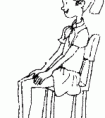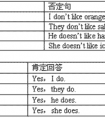用所给单词的适当形式填空。1.LiMing'splane(arrive)at6: 00yesterday.2. Where(do) thestargo?3.(one), weputonthelights.4.Let'sinviteDannytohelp (we)putupthe-六年级英语
有时,序数词可以用缩写形式来表示。主要缩写形式有。
first—lst
second—2nd
third—3rd
fourth—4th
sixth—6th
twentieth—20th
twenty-third——23rd
其中lst,2nd,3rd为特殊形式,其它的都是阿拉伯数字后加上th。
| 口诀 | 解说 | 举例 |
| 基变序,有规律,后边th加上去 | 在数词后面加th。 | four→fourth |
| 一二三,特殊记,后面字母t,d,d。 | one,two,three特殊变。 | first,second,third |
| 八去t,九去e。整数中的y要变成ie | eight去掉t,nine去掉e。twenty去掉y变成twentieth | eight→eighthnine→ninth |
| f来把ve替。 | five和twelve的ve要变成f。 | five→fifthtwelve→twelfth |
| 若是遇到几十几,只变个位就可以。 | 两位数或两位以上数字只变个位。 | thirty-three→thirty-third |
| 序数词前要加the我们一定要牢记。 | 序数词前必须加the(上述原则中的除外) | thefirstday |
序数词表示法:
一、分数表示法
1. 分数是由基数词和序数词一起来表示的。基数词作分子,序数词作分母,除了分子是“1”以外,其它情况下序数词都要用复数形式。
3/4 three fourths或 three quarters
1/3 one third或a third
24/25 twenty-four twenty-fifths
3又1/4 three and one fourth或 three and one quarter
1/2 a half
1/4 one quarter或a quarter
1又1/2 one and a half
1又1/4 one and a quarter
2. 当分数后面接名词时,如果分数表示的值大于1,名词用复数;小于1,名词用单数。
1又1/2 hours 一个半小时(读作 one and a half hours)
2又3/4 meters 二又四分之三米(读作two and three-fourths meters)
4/5 meter 五分之四米
5/6 inch 六分之五英寸
3. 表示“n次方”的说法:指数用序数词,底数用基数词。
10的7次方 the seventh power of ten(ten to the seventh power)
6的10次方 the tenth power of six(six to the tenth power)
二、百分数表示法
百分数用基数+percent表示
50% fifty percent 百分之五十
3% three percent 百分之三
0.12% zero point one two percent 百分之零点一二
这里的percent前半部per表示“每一”,cent这一后半部分表示“百”,所以百分之几中percent不用复数形式。
三、数量表示法
1. 表示长、宽、高、面积等,用基数词+单位词(meter,foot,inch,kilogram等)+ 形容词(long,wide,high等)表示,或者用基数词+单位词 + in + 名词(length, width, height, weight等)表示。
two meters long或 two meters in length 2米长
three feet high或 three feet in height 3英尺高
four inches wide或 four inches in width 4英寸宽
This box is 2 kilograms in weight.
这个盒子有两千克重。
The city wall of Xi/’an is 12 meters wide and 12 meters high.
西安城墙是12米宽,12米高。
2. 表示时间、距离时,使用含数词的名词所有格形式作定语。
five minutes/’ walk
步行五分钟(的距离)
It/’s an hour/’s ride from my hometown to our university.
从我的家乡到我们大学是乘车一小时的路程。
或:从我的家乡到我们大学需要乘车一小时。
It/’s three kilometers/’ distance from our campus to the Bell Tower.
从我们校园到钟楼有三公里远。
3. 表示温度时,用below zero表示零下温度,温度用基数词+degree(s)+单位词(centigrade摄氏或Fahrenheit华氏)表示。
thirty-six degrees centigrade或 36℃ 摄氏 36度
four degrees below zero centigrade或 -4℃ 摄氏零下4度
Water freezes at thirty-two degrees Fahrenheit.
水在华氏三十二度时结冰。
Water boils at one hundred degrees centigrade.
水在摄氏一百度时沸腾。
这里的单位词在人们都很清楚是什么度量制度时,可以省略。
You are 37℃.(读作 thirty-seven degrees)
你是三十七度。(摄氏)
It/’s seven degrees below zero.
今天是零下七度。(摄氏)
4. 由数词和其他名词构成的名词性短语作定语时,其中的名词用单数形式,名词性短语中各部分间要用连字符“-”来连接。
It/’s a five-minute walk from the library to the playground.
从图书馆到操场需要走五分钟。
She/’s a sixteen-year-old girl.
她是个十六岁的女孩。
5. 表示“比···大(或)几倍”的说法。
This room is two times bigger than that one.
这个房间比那个(房间)大两倍。
The dictionary is four times thicker than that book.
这本词典比那本书厚四倍。
My age is two times older than his.
我的年龄比他大两倍
考点名称:人称代词
人称代词:
代词是为了避免重复,用来代替前面提到过的人、动物、事物名称的词。人称代词主要用来指人,也能用来指物。人称代词分主格和宾格。人称
单数
复数
主格
宾格
主格
宾格
第一人称
I
me
we
us
第二人称
you
you
you
you
第三人称
he
him
they
them
she
her
it
it
- 人称代词主宾口诀:
人称代词分主/宾,只有八对要区分。
你(们)、它主/宾同一形,其余主/宾须分清。
谓语之前主格填,动/介之后宾格跟,
口语运用最灵活,表语也可用宾格。
人称代词并列现,注意顺序礼貌见,
二一、三一、二三一,第一人称最谦虚,
若把错误责任担,第一人称须当先。
考点名称:一般现在时,动词单数第三人称
一般现在时:
表示现在经常反复发生的动作、存在的状态或习惯性的动作的时态。可概括为
①经常性或习惯性动作;
②长期存在的特征或状态;
③普遍真理、客观事实等。
构成:
一般现在时用行为动词的原形,但第三人称单数作主语时,动词的词尾要加-S。
a. 表示经常性或习惯性的动作。
例:Li Ming always helps the old man. 李明一直帮助这位老人。
We usually go to school on foot. 我们通常步行上学。
They sometimes go fishing on Sundays. 他们有时周日去钓鱼。
b. 表示永恒不变的事实或真理。
例:A bird flies with wings. 鸟用翅膀飞翔。
c. 用在格言、谚语中。
例:Pride goes before a fall. 骄者必败。- 一般现在时具体用法:
1.表示经常的或习惯性的动作,常与表示频率的时间状语连用。
时间状语:
always,usually,every morning/night/evening/day/week/year,often,sometimes,
occasionally,from time to time,twice a week,rarely,seldom,once a month,hardly,ever,never.
e.g: I leave home for school at 7:00 every morning.
2.表示主语具备的性格、能力、特征和状态。
e.g:I don't want so much.
Ann Wang writes good English but does not speak well.
比较:Now I put the sugar in the cup.
- 最新内容
- 相关内容
- 网友推荐
- 图文推荐
| [家长教育] 孩子为什么会和父母感情疏离? (2019-07-14) |
| [教师分享] 给远方姐姐的一封信 (2018-11-07) |
| [教师分享] 伸缩门 (2018-11-07) |
| [教师分享] 回家乡 (2018-11-07) |
| [教师分享] 是风味也是人间 (2018-11-07) |
| [教师分享] 一句格言的启示 (2018-11-07) |
| [教师分享] 无规矩不成方圆 (2018-11-07) |
| [教师分享] 第十届全国教育名家论坛有感(二) (2018-11-07) |
| [教师分享] 贪玩的小狗 (2018-11-07) |
| [教师分享] 未命名文章 (2018-11-07) |

![Yesterdayhe hiskeys,sohecan'tgohome.[ ]A. losedB. lostC. losesD. losted-六年级英语](http://www.00-edu.com/d/file/ks/4/1/51/2019-08-24/small56b740c860ea72171119a747c83813f51566588119.gif)

![I ____________ to the store on Sunday. [ ]A. goB. went-五年级英语](http://www.00-edu.com/d/file/ks/4/1/51/2019-08-24/smallb5041caaeb2961272b3d1491492e45251566588603.gif)


